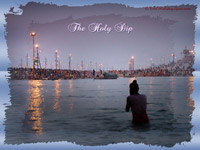India is a land of scenic beauty with its snow-capped mountains, lush green fields, verdant hills and white-foamy rivers. India boasts of many world heritage sites as well as world-famous palaces and monuments. The temples of Southern India are indeed examples of architectural wonder. India is a perfect haven for the tourists. Every year tourists flock in droves to explore the spectacular beauty of this splendid country. The tourism industry is a burgeoning industry in India.
The British must be given credit for developing most of India's hill stations. They did to escape the blistering heat of the long Indian summer. And with seven principal mountain ranges all over the country available to them they had the opportunity to explore each one of them and create their retreat towns, many of which are well maintained and retain their old-world charm.
Major Indian Hill Station
Almora Hill Station
Dalhousie Hill Station
Darjeeling Hill Station
Gangtok Hill Station
Gulmarg Hill Station
Kodiakanal Hill Station
Kufri Hill Station
Ladakh Hill Station
Mahabaleshwar Hill Station
Manali Hill Station
Mount Abu Hill Station
Munnar Hill Station
Mussoorie Hill Station
Nainital Hill Station
Nilgiri Hills Hill Station
Kodiakanal Hill Station
Ooty Hill Station
Panchgani Hill Station
Patnitop Hill Station
Shimla Hill Station
Srinagar Hill Station
Badrinath Hill Station
Bhimtal Hill Station
Chail Hill Station
Devikulam Hill Station
Idukki Hill Station
Itanagar Hill Station
Kasauli Hill Station
Khajjiar Hill Station
khandala Hill Station
Lonavala Hill Station
Nandi Hill Station
Pithoragarh Hill Station
Renuka Hill Station
Saputara Hill Station
Kullu Hill Station
















































